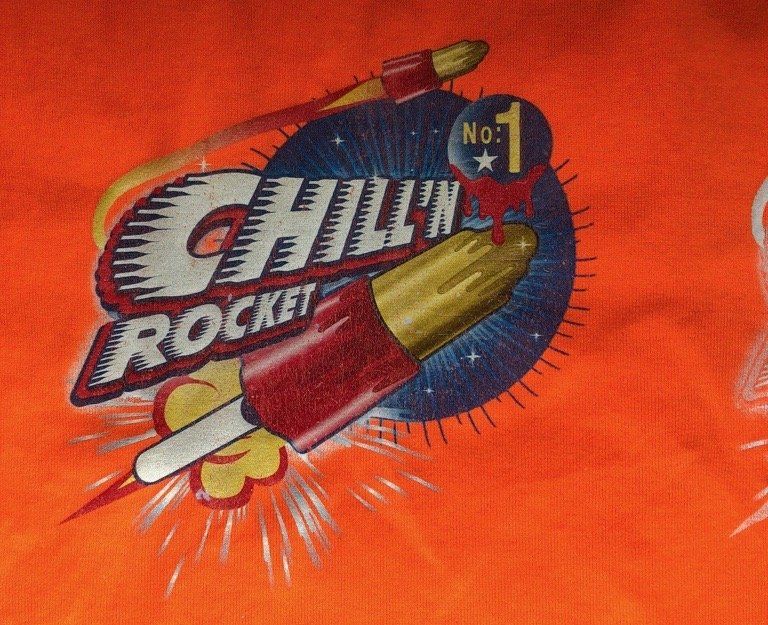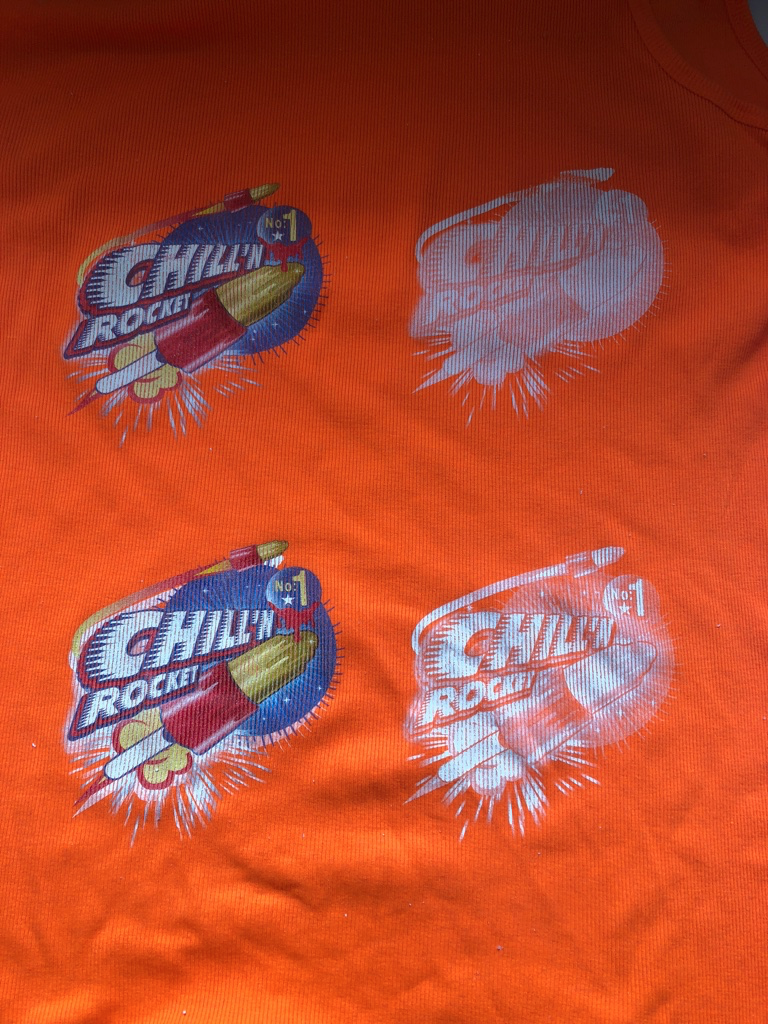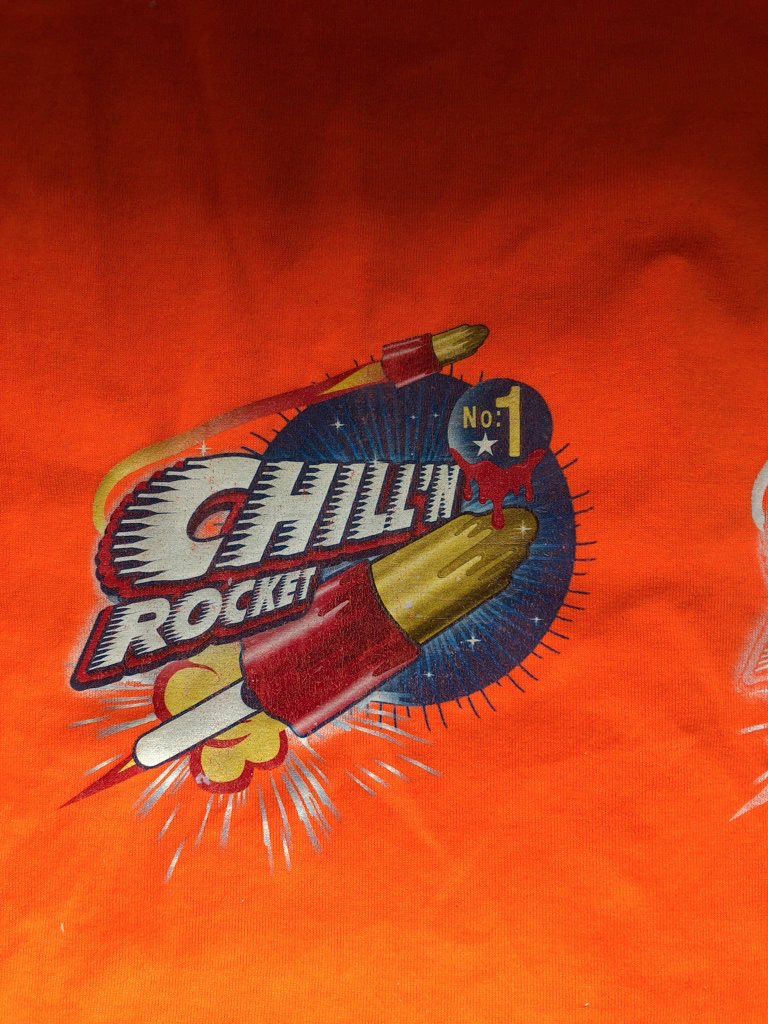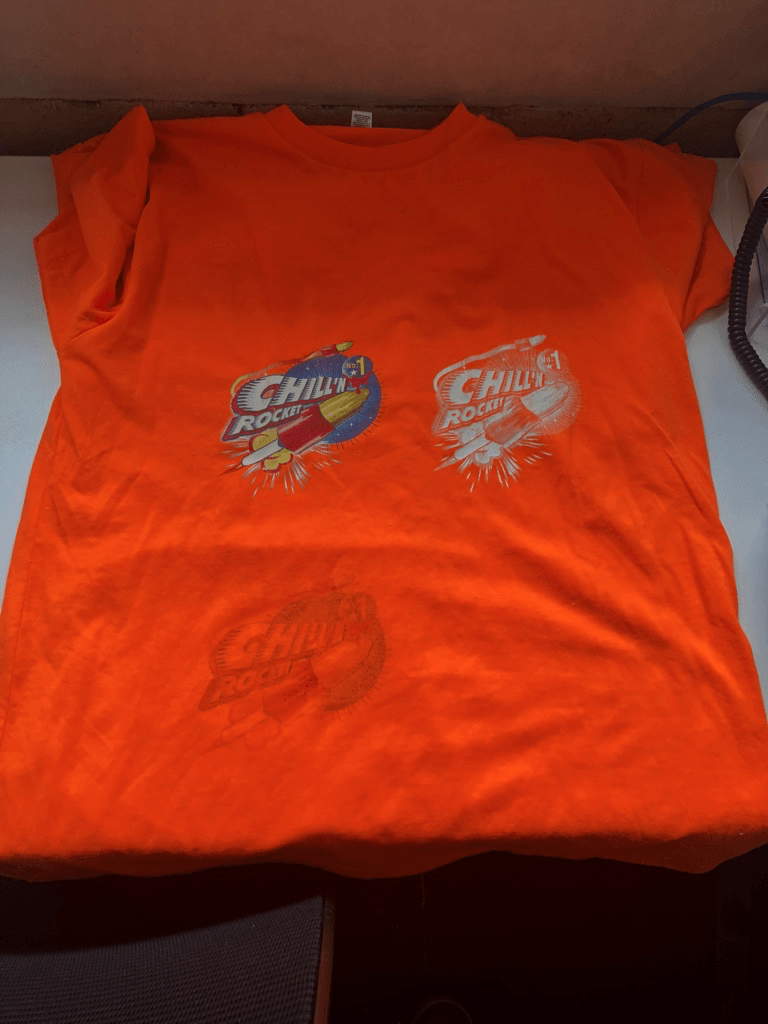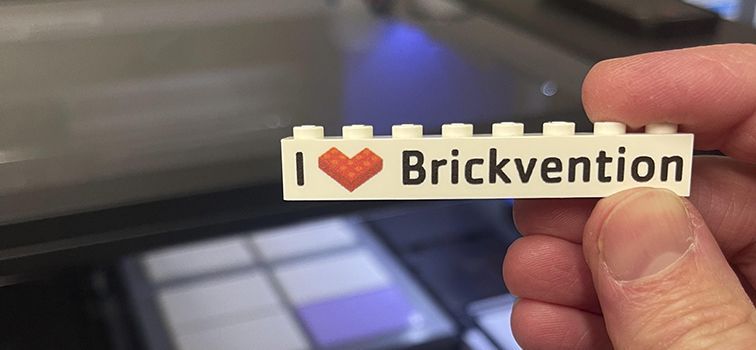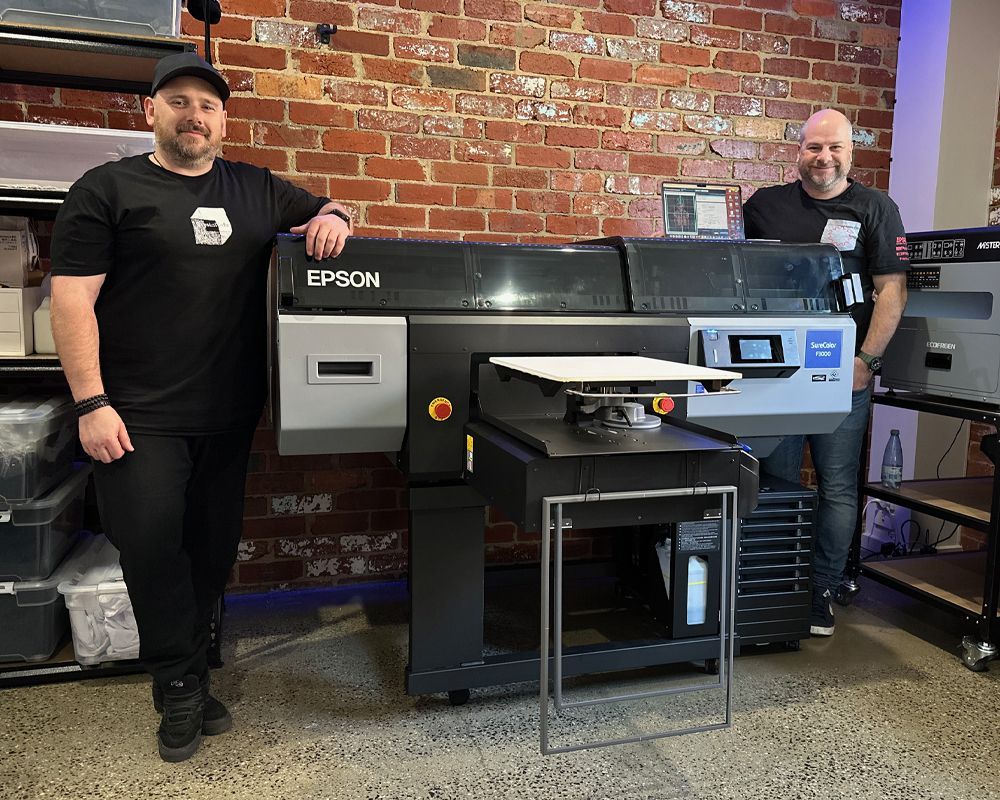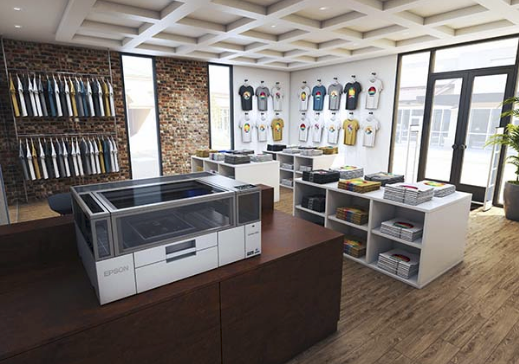Epson polyester pretreatment for dtg printers is designed to work with the Epson Ultrachrome inks on the Epson SureColor F2000 and F2160.
Machines Plus has been testing the Epson Polyester Pretreatment on garments with different polyester mixes from 100% to a 50/50 mix.
During our testing of the polyester pretreatment process we discovered the following:
- The garments need to be well soaked in the pretreatment.
- Application is best with a roller when the pretreatment is undiluted.
- Allow the inks to set properly before washing and stretching.
- Cure with lower temperatures and little or no pressure.
- Epson Polyester pretreatment for dtg printers has a thicker viscosity than the cotton pretreatment.
“The polyester pretreatment liquid is thicker than the cotton pretreatment. It is intended to be used at 1-parts pretreatment to 0-parts water. In general, diluting the pretreatment will result in duller colors but better wash fastness. When asked about diluting the solution to a 3-parts pretreatment to 1-part water (75/25 mix), the engineers at Epson felt that slight dilution will have only limited influence. The slightly diluted liquid should flow better through the sprayer."
T-shirt ForumEpson suggest preparing the pretreatment as follows:
For dark fabrics Epson recommends that you generally use the polyester pretreatment undiluted. If you want to use a spray gun you can try 3 parts pretreatment and 1 part distilled water so not to over dilute pretreatment.
For light fabrics the Epson Polyester Pretreatment should be diluted generally in a ratio of 1 part pretreat to 6 part distilled water before application.
This is a guide and you can experiment with the ratios to find what works best for your garments.
Applying the Epson Polyester pretreatment for dtg printers.
- Make sure to shake pretreatment before applying. Needs shaking often as it seperates quickly.
- Ensure that all lint and pilling is removed before applying pretreat.
- Undiluted pretreatment will need to be rolled on as it will not go through the noozles of the spray gun or pretreatment machines. When diluted it can be applied by spray gun, roller or with pretreat machine. Make sure to adjust nozzles when changing between pretreats.
- Before printing on garments evenly apply the pre-treatment liquid (customers should follow their user guide for instructions). Make sure the pretreatment is cured on a heat press before printing.
- Epson Polyester pretreatment is designed to be used with Epson Ultrachrome DG inks.
It is recommended that you run testing of the Epson dtg polyester pretreatment on the garments you use in your business. Just like with the the cotton pretreatment the polyester pretreatment can be affected by how the garment you use is manufactured, this will play a part in how the end products turns out.
Epson suggestions are a starting point for the polyester pretreatment process. You may find that you will need to tweak the pretreatment dilution or application to see what works best for your garments.
It is recommended that you keep notes of your successes and failures so you can build up a knowledge base for what does and doesn’t work in your business environment.
Epson Polyester Pretreatment Case Studies
Case 1: 100% Polyester
Applying the undiluted Pre-Treatment:-
Spray Gun ( electric )
- Unsuccessful
- No control of spray on garment ( narrow spray bandwidth )
Spray Gun ( Manual Spray )
- Unsuccessful
- No control of spray on garment ( narrow spray bandwidth )
Pre treater Machine ( Viper XPT-1000 )
- Unsuccessful
- No control of spray on garment ( narrow spray bandwidth )
Roller ( Foam roller )
- Successful with mid-pressure
- Pretreat went through first layer of fabric to second
Job Description
White Level 6 - 8 passes x 2
Color Level 2 - 10 passes x 1
Bi-Directional and Uni-Directional
30 sec pause
White +25/ +50 /+100
Heat Press
5 presses in total with light to no pressure.
- 130C x 60 sec (Dye Migration)
- 120C x 60 sec (White become transparent)
- 120C x 60 sec (White become transparent)
- 120C x 60 sec
- 120C x 60 sec
Notes:
Soaking the tee with pre treat had a much better result with white at 100% as well as pausing in-between passes.
Notes:
The roller needs to be applied evenly otherwise the printed image will be uneven like it is in this image.
Case 2: 100% Polyester
Applying the undiluted Pre-Treatment:-
Spray Gun ( electric )
- Unsuccessful
- No control of spray on garment ( narrow spray bandwidth )
Spray Gun ( Manual Spray )
- Unsuccessful
- No control of spray on garment ( narrow spray bandwidth )
Pre treater Machine ( Viper XPT-1000 )
- Unsuccessful
- No control of spray on garment ( narrow spray bandwidth )
Roller ( Foam roller )
- Successful with mid-pressure
- PT was through first layer of fabric to 2nd
- With heavy Pressure PT was soaked through first and second layers
Job Description
White Level 6 - 8 passes x 2
Color Level 2 - 10 passes x 1
Uni-Directional only
30 sec pause
(Top) White +25 / Color +5
(Middle) White +50 / Color +10
(Bottom) White +100 / Color +30
Heat Press
4 presses in total
Air Dried at 19C for 10 min before placing on heat press
- 150C x 20 sec (Dye Migration)
- 126C x 60 sec (White become transparent)
- 120C x 60 sec (White Ink still wet)
- 120C x 60 sec (White ink Stabilized)
Stretched inks as soon as off the press here - evident in prints after washing
Washing
- Both Jerseys washed on Cold, inside out, 20 min cycle and Air Dried
- Do not stretch the inks to soon off the press - the result would be better washing wise, if i left the ink to cure completely as a solid
Case 3: 60% Polyester 40% Cotton
Applying the undiluted Pre-Treatment:-
Spray Gun ( electric )
- Unsuccessful
- No control of spray on garment ( narrow spray bandwidth )
Spray Gun ( Manual Spray )
- Unsuccessful
- No control of spray on garment ( narrow spray bandwidth )
Pre treater Machine ( Viper XPT-1000 )
- Unsuccessful
- No control of spray on garment ( narrow spray bandwidth )
Roller ( Foam roller )
- Successful with mid-pressure
- PT was through first layer of fabric to 2nd
- Heavy Pressure PT was soaked through first and second layers ( Light stain after wash )
Job Description
White Level 6 - 8 passes x 2
Color Level 2 - 10 passes x 1
Uni-Directional only
30 sec pause
(Top) White +25 / Color +5
(Middle) White +50 / Color +10
(Bottom) White +100 / Color +30
Heat Pressing
4 presses in total
Air Dried at 19C for 10 min before pressing
- 150C x 20 sec (Dye Migration)
- 126C x 60 sec (White become transparent / Some Dye Migration )
- 120C x 60 sec (White Ink still wet)
- 120C x 60 sec (White ink Stabilized)
Case 4: 50% Polyester 50% Cotton ( High Vis )
Applying the undiluted Pre-Treatment :-
Spray Gun ( electric )
- Unsuccessful
- No control of spray on garment ( narrow spray bandwidth )
Spray Gun ( Manual Spray )
- Unsuccessful
- No control of spray on garment ( narrow spray bandwidth )
Pre treater Machine ( Viper XPT-1000 )
- Unsuccessful
- No control of spray on garment ( narrow spray bandwidth )
Roller ( Foam roller )
- Successful with mid-pressure
- PT was through first layer of fabric to 2nd with heavy Pressure PT was soaked through first and second layers ( Light stain after wash )
Job Description
White Level 6 - 8 passes x 2
Color Level 2 - 10 passes x 1
Uni-Directional only
30 sec pause
(Top) White +25 / Color +5
(Middle) White +50 / Color +10
(Bottom) White +100 / Color +30
Heat Pressing
4 presses in total
Air Dried at 19C for 10 min before press
- 120C x 60 sec (Dye Migration)
- 120C x 60 sec (White become transparent / Some Dye Migration )
- 120C x 60 sec (White Ink still wet)
- 120C x 60 sec (White ink Stabilized)
Notes:
After washing the ink could be rubbed from the Tee
Washing:
- All Washing done on a Front loader, using Omo Detergent on Sinthetics setting in Cold water ( Default is warm )
- No Softener used
- Low and slow on the heat press at 120C is better as i did not get any Dye migration on to the backing paper.
- Small prints only, larger Prints would make garment to shrink around prints ( anything over 150mm )
Resources:
https://www.t-shirtforums.com/epson-surecolor-dtg-printers/t868939.html
InfoTrends Blog - What Epson’s new DTG Solution Means for Polyester Printing
Machines Plus are a digital print supplier for garment and digital decorators, of any business type or size. Gus and his team help digital decorators to get ahead in their business by selling the latest in machines, consumables and apparel for garment printing (DTG), UV printing, sublimation and heat transfer. Brands such as Epson, Ricoh, Roland DG, SawGrass, Hix, Stahl's, Siser, and Image Armor.
They partner with customers, matching the right solution to their business and provide unbeatable value and experience. Gus and his team support customers in regional Australia as well as the major cities domestically and internationally.

